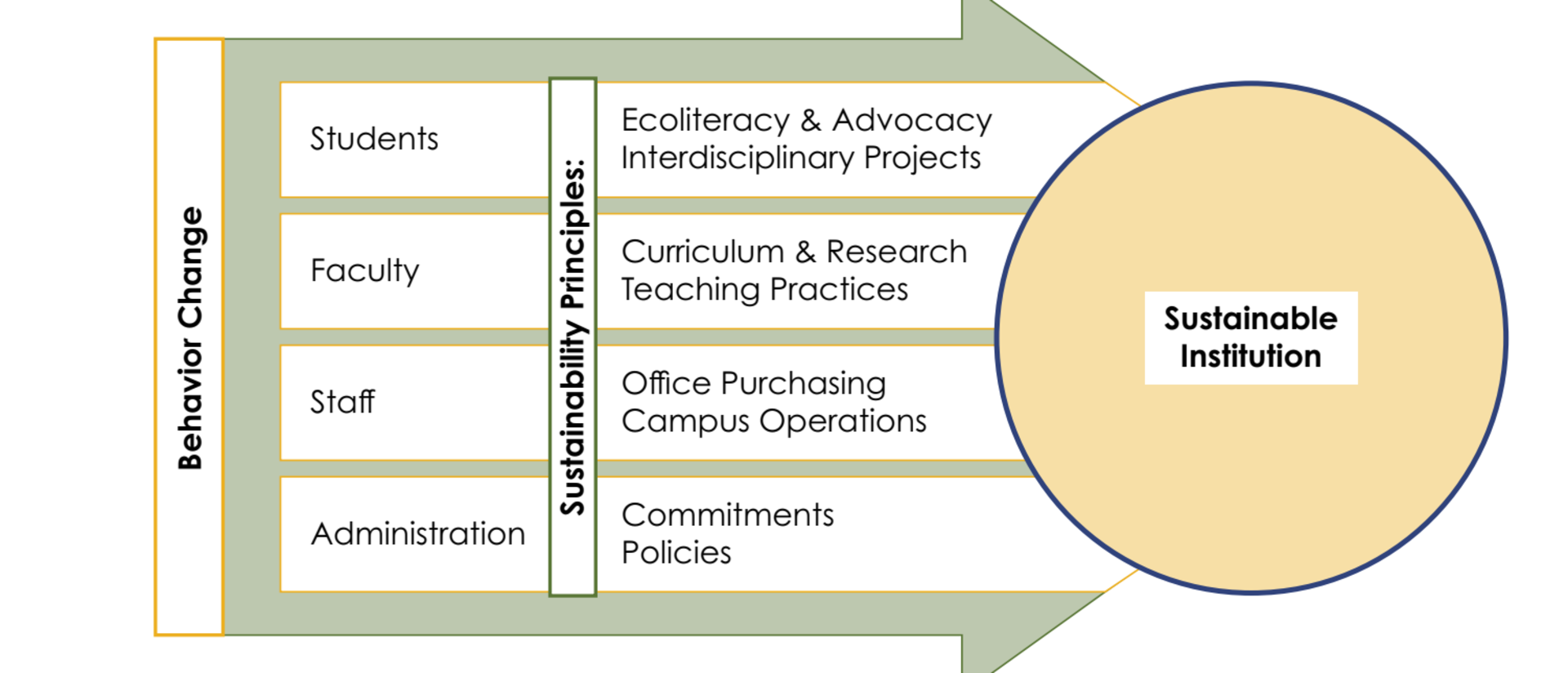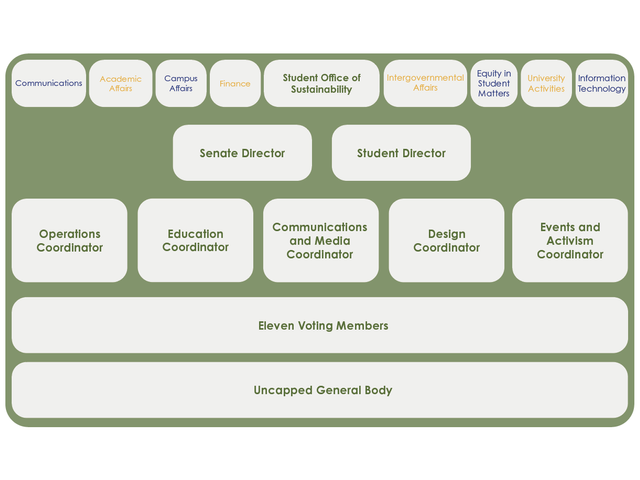
About the SOS
Learn about the Student Office of Sustainability
The purpose of the SOS is to allocate the UW-Eau Claire Green Fund for projects, programs, and events addressing the various sustainability areas of transportation, energy, waste, climate change, water, food systems, campus ecology, education, and outreach. This is done through the collaboration of UW-Eau Claire students, faculty, staff, and administration whose collective efforts generate positive behavioral and infrastructural changes that serve to support the growth of our University as a sustainable institution.

What is the Green Fund?
The Green Fund is a capped, annual $200,000 student-segregated fee allocation. The Green Fund was created in 2008 through a student referendum, where students voted to invest approximately $8 per semester into an environmental responsibility account. The Green Fund is capped to prevent fluctuation in funding due to the variation in student enrollment rates each year. This budget cap enables the SOS to plan a year in advance on projects, programs, and events. The Finance Commission approves the $200,000 allocation each fiscal year; the allocation then enters the SOS Operating Budget. In addition to the Operating Budget, the SOS also has a Capital Fund, which is used as a holding fund for future high-impact capital projects (i.e. the Outdoor LED Lighting Project or the Solar Project). Together these two SOS accounts comprise the Green Fund.
How Was the Green Fund Created?
In 2008, a student referendum, conducted through a campus wide email, favored the creation of a Campus Green Fund. Therefore, students’ voted to increase their student-segregated fees in order to establish a Green Fund at the University. In 2009, the Green Fund was established—the Board of Regents approved the Fund, and the Student Senate created the Environmental Endeavors Commission (EEC) to manage the Fund. Being the establishment year of the Green Fund, only $1 per student was collected, and the EEC could not allocate funds based on a negotiation between the Board of Regents and the Chancellor.
In 2010, the first year the Green Fund was allocated, the EEC operated as a granting body. The EEC would receive proposals, hold a series of hearings and deliberations, and then grant funding to various proposed environmental projects on campus. This model proved ineffective at project oversight and did not allow for continuous program development. These issues were addressed through the creation of the Student Office of Sustainability (SOS). In 2011, the Student Senate created the SOS, then a special committee, to replace the EEC and operate using a collaboration model to allocate the Green Fund. In 2014, the Student Senate adopted the SOS as an official Student Senate Commission with Commission Bylaws that established the organizational and budget structure now used by the SOS and detailed in this Director’s Manual.
Structure + Staffing
